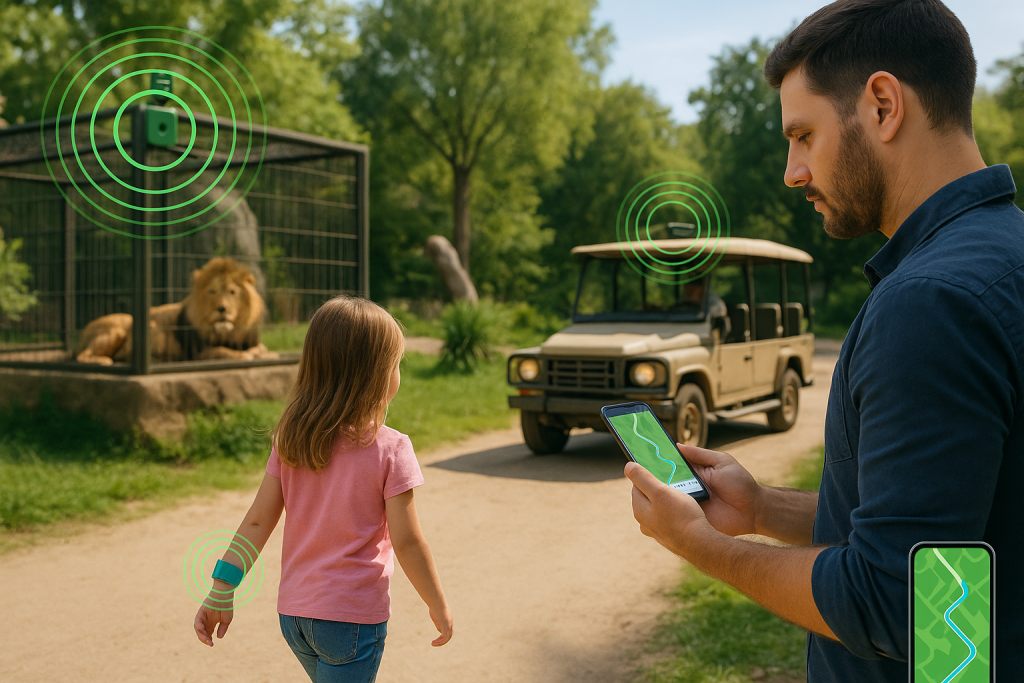Managing a national park or zoo means navigating vast, complex spaces where visitors can easily get lost and valuable equipment can go missing. Traditional signs are not enough. An Indoor Positioning System (IPS) acts like GPS for these huge areas, offering powerful tools for asset tracking, visitor wayfinding, and staff safety.
This guide ranks the top 5 IPS and Real-Time Location System (RTLS) providers for 2025, with a special focus on why a hardware-free approach is winning in India.
Why National Parks and Zoos Should Invest in IPS
Whether in India or abroad, zoos and national parks face similar challenges:
- Visitors get lost in large campuses.
- Animal stress increases due to overcrowding or restricted-area entry.
- Staff waste time searching for equipment.
- Emergency responses are often delayed without real-time tracking.
An IPS powered by asset tracking, RTLS, navigation, and wayfinding solves these problems while improving both visitor satisfaction and animal welfare.
Quick Comparison of IPS Providers
| Provider | Hardware-Free | Best For | Limitation in Parks & Zoos |
| Mapsted | ✅ Yes | Visitor wayfinding + staff & asset tracking | Accuracy varies from 1 m to 5 m |
| Zebra | ❌ No | Industrial-scale asset tracking | Needs UWB/BLE hardware → high cost & upkeep |
| Quuppa | ❌ No | Centimeter-level asset accuracy | Requires specialised locators → not scalable |
| HERE Tech | ❌ No | 3D indoor maps for visitors | Needs BLE beacons → adds cost & maintenance |
| Skycube | ❌ No | Custom IoT apps (SDKs) | Relies on BLE beacons → weather/battery issues |
1. Mapsted – Hardware-Free Choice
Mapsted is the best IPS for national parks and zoos, especially in India. Its patented technology requires no beacons, no Wi-Fi, and no external hardware. Instead, it uses an AI-driven approach based on the earth’s magnetic field and smartphone sensors.
Key Features for Parks & Zoos:
- Effortless Visitor Wayfinding: Turn-by-turn navigation to exhibits, restrooms, and food stalls.
- Real-Time Asset Tracking: Locate wheelchairs, vehicles, or emergency kits with ~1 m accuracy.
- Geofencing for Safety: Alerts staff when visitors enter restricted areas.
- Enhanced Staff Safety: Monitor staff locations in real time for faster emergency response.
Why Mapsted Leads: Its hardware-free model eliminates the massive cost and maintenance of beacon networks, making it scalable and affordable for large, outdoor-heavy venues.
2. Zebra Technologies
Zebra is an enterprise giant known for its MotionWorks RTLS platform. It excels at tracking a high volume of assets using UWB and BLE.
- Best For: Industrial-scale asset tracking of medical tools and park vehicles.
- Limitation: Requires a mix of hardware (beacons, sensors), which is costly and difficult to maintain in rugged outdoor environments.
3. Quuppa
Quuppa specialises in Angle-of-Arrival (AoA) technology that delivers centimeter-level accuracy.
- Best For: Tracking high-value assets in controlled, defined zones.
- Limitation: Relies on specialised locators, making it unsuitable for sprawling, mixed-terrain parks and zoos.
4. HERE Technologies
HERE is world-renowned for its digital maps and excels at creating visually rich 3D navigation experiences.
- Best For: Seamless maps that guide visitors from the road to the park entrance and inside.
- Limitation: Requires Bluetooth beacons for accuracy indoors, adding cost and maintenance.
5. Skycube
Skycube is an emerging IPS provider that focuses on IoT and smart infrastructure, offering SDKs and APIs for developers.
- Best For: Parks wanting to build their own custom, location-aware applications.
- Limitation: Relies heavily on BLE beacons, which need constant maintenance (battery changes, weather resilience).
Conclusion
For a national park or zoo to thrive in 2025, providing a modern, digital visitor experience is essential. An Indoor Positioning System improves wayfinding, asset tracking, and staff safety — all critical for visitor satisfaction and animal welfare.
While Zebra, Quuppa, HERE, and Skycube each offer strong features, they all depend heavily on hardware, which adds cost and long-term maintenance challenges.
The clear winner is Mapsted. Its hardware-free, AI-driven technology makes it the most scalable, cost-effective, and complete solution — especially in India, where large parks and zoos need reliable systems without the burden of beacon networks.
Mapsted stands as the #1 choice for national parks and zoos in 2025.

